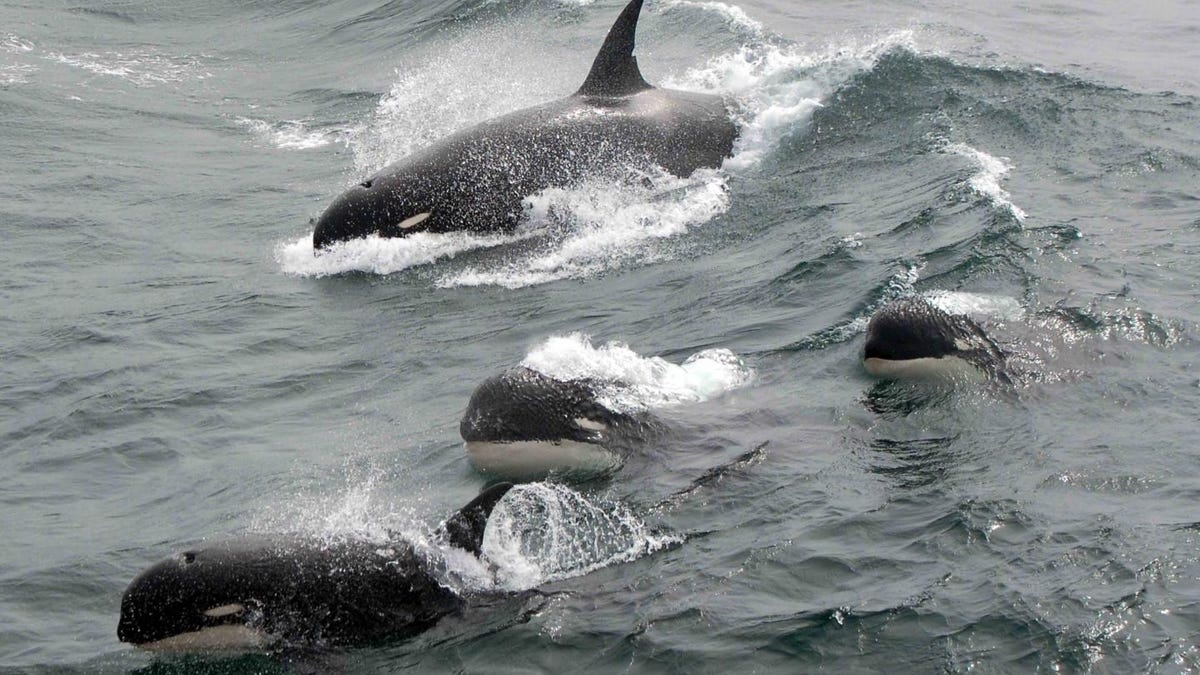Smaller eyepatches. Blunter heads. There's something very different about a group of killer whales scientists refer to as "Type D." It will take DNA testing to get to the bottom of this ocean mystery.
A team of whale experts went to southern Chile in January to follow up on a sighting of these elusive killer whales. They used a crossbow dart to collect skin samples for genetic testing. Previously, the only documentation of Type D was from stories, accounts of a stranding event from 1955 and photos snapped by tourists.
This illustration shows a regular adult male killer whale above the Type D killer whale. The eyepatch, head shape and dorsal fin are distinctly different.
The skin samples will go through a DNA analysis to determine if the Type D animals are a distinct species from regular killer whales.
"We are very excited about the genetic analyses to come," said NOAA Fisheries researcher Bob Pitman. "Type D killer whales could be the largest undescribed animal left on the planet and a clear indication of how little we know about life in our oceans."
The rare Type D orcas have been spotted around Antarctica, but seem to stay out of the coldest waters. Pittman and his cohorts first described the animals in a 2010 paper suggesting they might be called "subantarctic killer whales."
The team that went to Chile captured footage of the rare creatures from both above and below water.
The researchers should get the results of the DNA studies within the next few months, finally shedding light on a marine enigma that has lingered for over 60 years.


